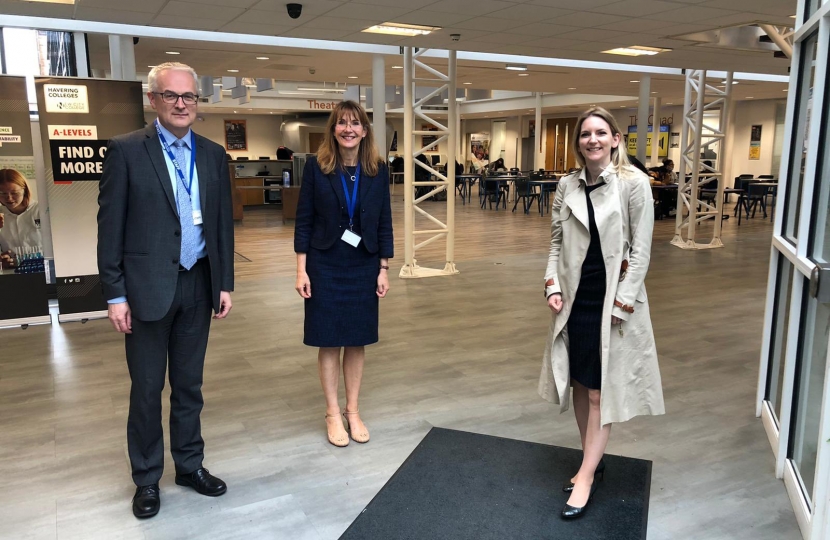
This month, the UK hosted the G7 in Cornwall where global leaders pledged to ‘build back better’ after the pandemic. But what does ‘building back better’ mean for us locally? Constituency meetings from the last week give a flavour of how the pandemic is shaping future planning.
Last week, I visited the Harold Hill Health Centre where a range of services - from blood testing to podiatry and GP services - are concentrated in one hub. The team there have achieved fantastic things however, the pandemic has highlighted the need for even better integration of care. Local health leaders are actively talking about how to take that model further as we construct the new NHS hub in Hornchurch by designing more spacious facilities, placing ever more hospital services in the community, and getting social care and mental health services into hubs too.
I also visited Havering Sixth Form College - now part of New City College - to talk about the skills agenda after the pandemic with new Principal, Janet. The College is working to equip students with the digital and data skills as ever more services move online. In my ministerial role, I am leading work on government digital services and looking at how we train people of all ages to fill the thousands of jobs being created in the field.
How we deliver infrastructure will be important too. A meeting with the Lower Thames Crossing team included discussion of their purchase of Hole Farm in Brentwood, which will be planted with 150 000 trees to create a new community forest that will connect with Thames Chase in Upminster and offset some of the scheme’s environmental impact. From health care to jobs, skills, and our impact on the environment - the pandemic is making us all look at how to build a future that is better than the one we had planned.

